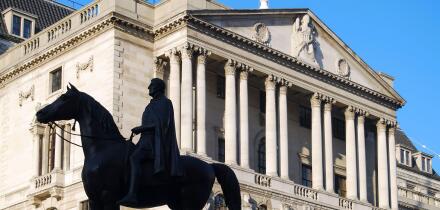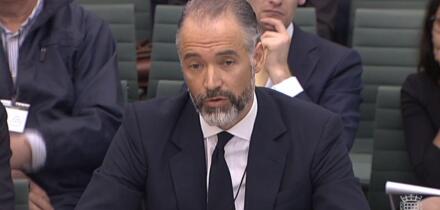by Professor Richard Roberts, King’s College London
The ZLB hit the poubelle on June 11 2014 when the European Central Bank (ECB) cut its deposit rate for bankers’ balances to -10bp. Denmark’s Danmarks Nationalbank followed suit in September 2014, followed by the Swiss National Bank in December, Sweden’s Sveriges Riksbank in February 2015 and the Bank of Japan in January 2016.
A week ago, the ECB cut its rate again, charging banks -40bp to hold their cash, though the leader in testing less than zero rates has been Denmark’s central bank which has plumbed -75bp.
And that, so far, is a total and comprehensive history of negative nominal interest rates.
While negative nominal rates are a distinctly recent development, negative real interest rates — the nominal rate minus the inflation rate – are by no means unknown historically.
Negative real rates have mostly been a feature of eras of high inflation. In Britain’s case, that meant the World Wars of 1914-1918 and 1939-1945, the post-war 1940s and early 1950s, and the 1970s — 1975 saw Britain’s record negative real interest rate of minus 1,300bp.
In post-war Britain and elsewhere, negative real interest rates suited highly indebted governments as a means of eroding the debt-to-GDP ratio and amounted, in effect, to a tax on banks and savers — so-called “financial repression”. In the post-financial crisis world, many governments once again face the problem of high debt-to-GDP ratios. However, the background environment is not inflation but deflation, which exacerbates debt burdens.
Deflation is an uncommon phenomenon in financial history. Britain experienced gently falling prices in the years 1873-96, a benefit of the world’s first era of globalisation. Nominal interest rates in these years were relatively low but nonetheless positive; hence the real interest rate just about stayed positive.
So too in the other deflationary period, 1920-1934, which saw both nominal and real interest rates as mostly mildly positive, though a short-lived slump in 1920-1921 resulted in a brief bout of deeply negative real rates. During these deflations, the Bank of England maintained a positive nominal policy rate, as did other central banks in similar circumstances.
All of which serves to highlight the historical novelty of today’s negative nominal interest rates.
There have been different motives behind joining the negative rates club. For the ECB and Sveriges Riksbank, primarily the stimulation of inflation and growth, for Danmarks Nationalbank and Swiss National Bank (SNB), to curb currency appreciation, and for the Bank of Japan, a bit of both.
So far the macroeconomic impact is uncertain, but adverse effects have been less than feared. There is little sign that banks have sought to recover losses by raising interest rates for new lending and little sign of depositors hoarding cash, since banks have not passed on the negative rates to customers.
Banks are complaining about the squeeze on their profits, which could affect their ability to lend and ultimately their stability, if negative rates persist beyond the short-term. And unintended consequences are popping up, such as the lucky Danish homeowners whose mortgages have started paying them.
The main impact so far has been in the exchange rate; the euro has fallen 20% against the dollar since the ECB’s initial move, and the prompt imitation by Denmark and Switzerland. Negative rates have joined the armoury of currency warfare.
Unconventional monetary policy in response to the aftermath of the financial crisis began with asset purchases. Quantitative easing has now been adopted as a regular instrument in the central bankers’ toolkit — albeit one of limited effectiveness.
Negative nominal rates is the new unconventional big idea. But is it a bold imaginative addition to the toolkit, or an act of desperation after trying everything else?
If the upsides prevail, negative rates may become a familiar feature of the financial landscape. But if the downsides predominate, it could deal a too-damned-clever-by-half blow to public confidence. That could weaken, perhaps fatally, belief in the regime of independent central banks and inflation targeting that has held sway for the last 25 years.






